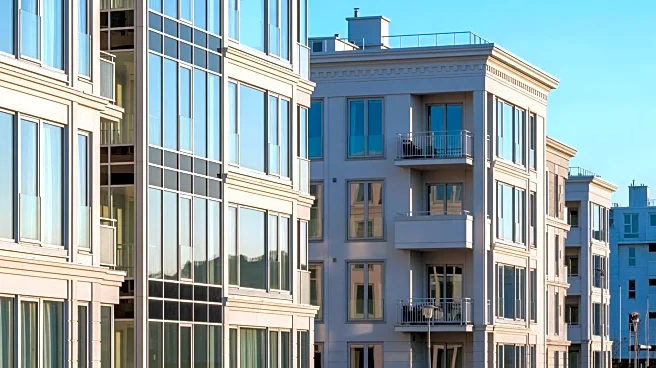What's Happening?
Investors are being advised to repurpose existing assets, such as small commercial buildings and shophouses, into co-living spaces to meet the growing demand and overcome high entry barriers. The co-living sector in Singapore has seen a steady expansion,
with room supply increasing by 17% from 2023 to 2025. This growth is largely driven by foreign tenants, primarily from China, Malaysia, and India, who make up 70% to 90% of the tenant base. Despite the demand, challenges such as limited land availability and high property prices make acquisitions difficult. High fit-out and construction costs, driven by investments in smart technologies, premium furniture, and sustainable construction practices, are also impacting developers. Analysts suggest converting underused properties into co-living developments as a solution.
Why It's Important?
The shift towards co-living spaces reflects broader trends in urban living and real estate investment. As cities become more crowded and property prices rise, co-living offers a viable solution for affordable housing, particularly for young professionals and expatriates. This trend could significantly impact the real estate market by increasing the value of underutilized properties and encouraging sustainable urban development. Investors and developers stand to benefit from this shift by tapping into a growing market segment, while cities could see a reduction in housing shortages and an increase in efficient land use.
What's Next?
Investors and developers are likely to continue exploring co-living as a profitable venture, especially in prime urban locations. The adoption of asset-light models, such as management contracts, could further facilitate this trend by reducing initial capital outlays. Additionally, partnerships between the government and private investors may expand rental housing options, leveraging public resources to mitigate investment risks. As the demand for co-living spaces grows, more properties may be repurposed, potentially leading to a transformation in urban housing landscapes.
Beyond the Headlines
The rise of co-living spaces also highlights a cultural shift towards communal living and shared resources, which could influence future urban planning and housing policies. This trend may encourage more sustainable living practices and foster community engagement among residents. Furthermore, the integration of smart technologies in co-living spaces could set new standards for modern living, emphasizing convenience and connectivity.















